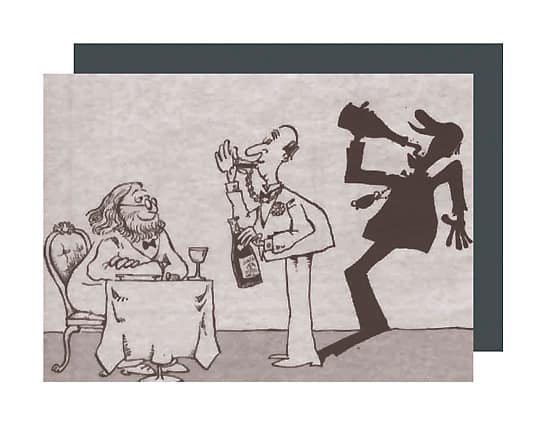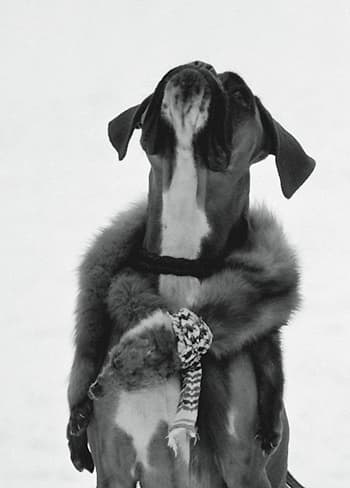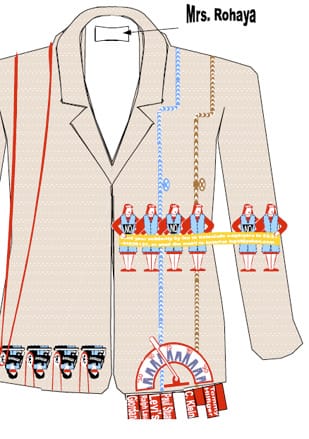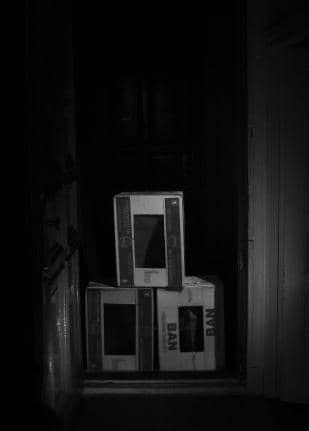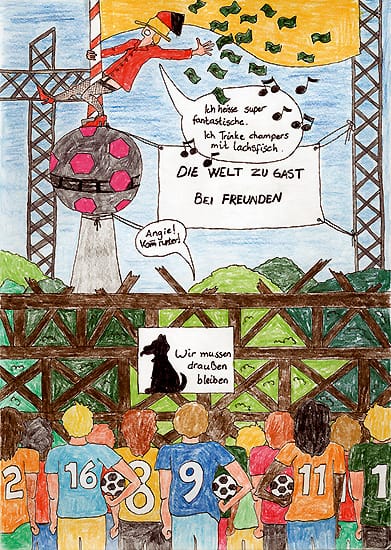Charlotte Cullinan + Jeannine Richards, artlab London – ,PINXIT‘
Opening: June 15 from 7pm, Exhibition: June 16 – July 7, 2007
open Friday and Saturday 3-7pm or by appointment

We hoped we might be able to find something positive to say about this show, and we have.
The more thought we give to PINXIT, by Cullinan+Richards, the more our desire to salvage something of value from their misadventure increases, fueled by familiarity, neat reasoning and formal travesty. In its attempt to engage in highly complex intellectual and eccentric debate PINXITopens up vast chasms between the drab actuality of the objects on show and the arrogant and shaky theoretical assertions knowingly proposed by the artists.
Cullinan+Richards are making an ‘ongoing work concerning an imagined history for these objects’, exploring ‘duplicity, doubling, betrayal and desire PINXITconsists of a script made of neon lights giving off a harsh orange glow reading ‘Et Tu’, five paintings of a male torso, and a film.
The discrepancy between the objects and accompanying assertions seems to be used here as a model for the relationship between the viewer and the artists. Taped to the glass, Neon Window (2007) spells the words ‘Et Tu’, could this refer to the fact that the paintings are actually made by someone else in 1973, and the film made in America in the 1920’s, and thus a betrayal of the viewers trust?
PINXIT exposes Cullinan+Richards as capable of discussing the tragedies of artistic extremism. Perhaps it is this carefully curated combination of a particular situation (a former butchers shop in Berlin now an artists run space) and these objects, which leads me to believe that Cullinan+Richards will definitely amount to something.
Henry Challenger and Daniel Fuchs, London-Berlin, 2007
Cullinan+Richards founded Savage School Window Gallery for text work in
2006, No.7 Vyner Street, London: invited artists include Clunie Reid,
Volker Eichelmann, Jeffery Charles Gallery with Henry Peacock, Fillip
Magazine, Tom Morton
Solo shows include: The Dummy Project, Stanley Picker Gallery,
London, 2007; Headquarters, Daniel Spoerri Foundation, Italy, 2006;
Retrospettiva, Pari & Dispari Project, Italy, 2006; Retrospektyva
IBID Projects, Vilnius, Lithuania, 2005. Independent Republic, M.O.T.
Gallery, London, 2005 Group shows include: Whitstable Biennale, 2006;
Leaps of Faith, Cyprus, 2005; Documentary Creations, Kunstmuseum, Luzern
Switzerland, 2005; Britannia Works, Athens, 2004; Ambulantes, Museum of
Contemporary Art, Seville, 2004; Values, 11thBiennale of Visual Art,
Pancevo, Serbia, 2004; Edge of the Real, Whitechapel Gallery, 2004
